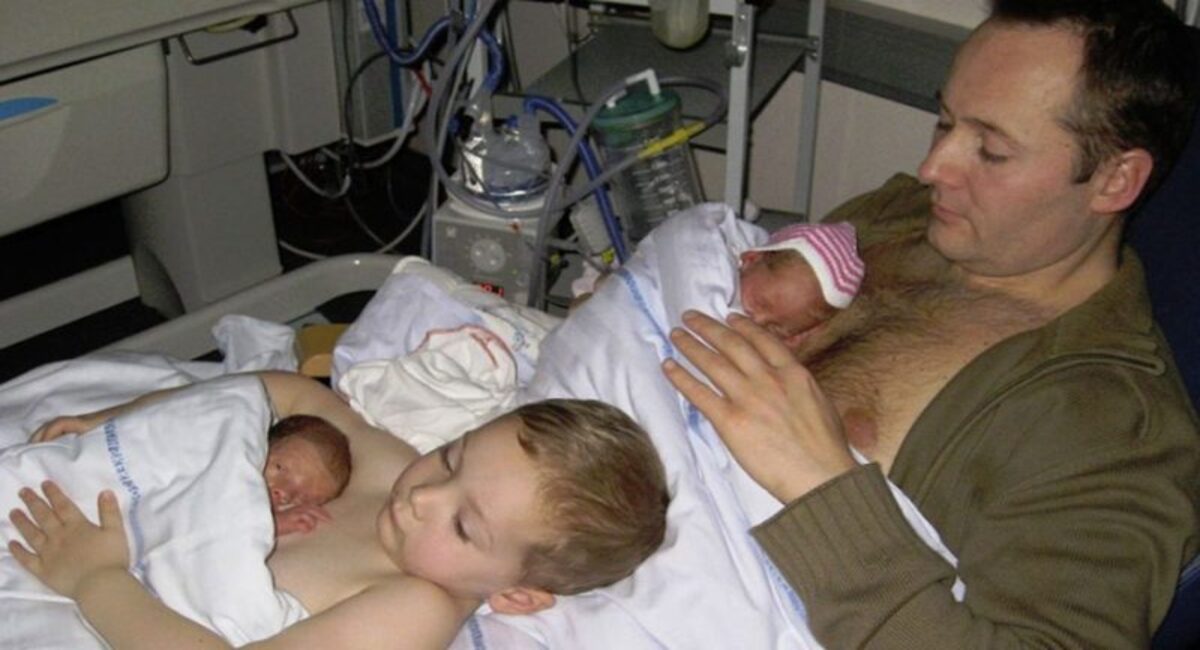What is more heartfelt than that? In Scandinavia, skin-to-skin contact is very common. For preterm newborns, it is utilized as an alternative to incubation. It is thought that human interaction, as opposed to total isolation in a soulless machine, aids these frail newborns in standing up again.
This image of a young child assisting his father in cuddling his preterm brothers is really heartwarming. The image was captured in Copenhagen in 2016. (Denmark). The phrase “skin to skin” contact is also known as the “kangaroo approach.”

The newborns are placed on the mother’s or father’s uncovered chest every day for anywhere from a few minutes to many hours as the technique’s cornerstone. Babies that use it regularly quickly adjust to their surroundings, develop intellectually, and gain weight. The “kangaroo” approach gradually and organically acclimates the infant to the outside world. It has the appearance of a gentle simulation of all the child’s senses.
The infant experiences touches, strokes, hears the mother’s heartbeat and voice, smells breast milk, and feels the mother’s body.

A sensation of balance, of bodily position in space, and of movement are stimulated. Studies have shown that when employing such contact, the condition of preterm neonates stabilizes significantly more quickly than in an incubator. Additionally, there are fewer problems and deaths among young children.
In one research, children weighing 1000–1500 g had a 30–70% higher survival rate.






